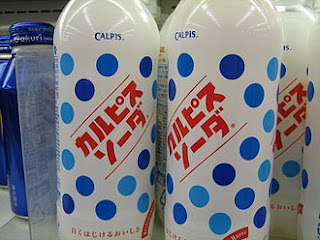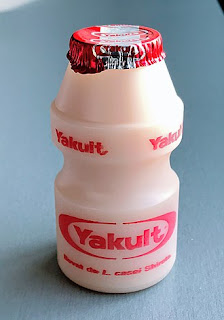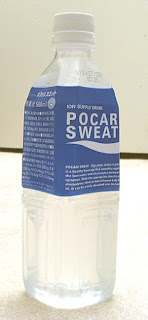My copy of
The Inland Sea, the great travel book by Donald Richie, is dated 1978 (the book was originally published in 1971), a big, sturdy paperback by Weatherhill, a small and excellent publishing firm that unfortunately went under - it was taken over by Shambala in 2004. So I must have bought the book when I was studying in Kyoto in the early eighties. I first read it after my return to Holland a few years later and it filled me with an immense desire to go back to Japan again. I wanted to make the same trip as Richie, like him, I wanted to live and work in Japan.
Happily, I managed to return to Japan very soon after that, and I did indeed visit many of the places on the beautiful Inland Sea Richie describes so masterfully, although I never had the time to make the whole tour.
[Onomichi]
Richie toured "The Inland Sea" already way back in 1962, as he tells in an informative afterword (unfortunately not included in the latest edition by Stone Bridge Press). Rather than a step-by-step account of a real trip, the book is an amalgam of elements from various trips, some also not Inland Sea related (although it is not possible to tell which these are). Besides that, Richie reflects on Japanese culture, in which he sees himself as an perennial outsider, and on his own life (a marriage on the verge of breaking up).
“Wherever one turns there is a wide and restful view, one island behind the other, each soft shape melting into the next until the last dim outline is lost in the distance.”
Richie therefore speaks about "travel fiction," but are not all great travel books like that? A day to day account would only be boring - a great story is a summary of various experiences, a writer has the license to change small details in the pursuit of a greater truth.
[Ferry between Takamatsu and Naoshima]
What strikes is that even at this early time (seen from my perspective) Richie already laments the loss of the beauty of the Japanese landscape due to modernization. And that, while I always felt jealous of people like Richie who could live in Japan in 1950 or 1960 instead of the 1980s!
"New Japan does not like trees. Its totem is the bulldozer."
On the other hand, isn't this nostalgia for a pristine Japan, both landscape and man unsullied by modernity, typical of us, Westerners? Is it because even unconsciously we have an image of an exotic East on our retina? Or is it that Japan, like a great mirror (as Richie concludes), forces us to question our own culture and ourselves in this way?
Richie travels from Himeji to Hiroshima, crisscrossing the Inland sea and landing at Uno, Onomichi and Kure on Honshu, and Takamatsu, Sakaide and Imabari/Matsuyama on Shikoku. The islands he visits include Iejima, Shodoshima, Naoshima, Omishima, and many smaller ones. His means of transport is the ferryboat, slowly weaving its way between the islands and the port cities.
"I hear they are building a bridge
To the island of Tsu.
Alas...
To what now
Shall I compare myself?"
(old Japanese poem, cited at the start of The Inland Sea)
[Tomonoura]
No, modernity certainly has not passed the Inland Sea by. There are today three bridges linking Shikoku with Honshu via the Inland Sea (happily the ferries also still exist, as they are much cheaper than the toll bridges). Shikoku is no longer far away, Sakaide and Takamatsu, and also Matsuyama are now only a short train or bus trip from Kobe, Okayama or Hiroshima. The islands have been domesticated. And alas, more than in Richie's time, the shores of the sea have been plastered with heavy industry. The area now also shares in the general problem of Japan's countryside: the graying of the population, and the exodus of what remains of young people to the big cities.
And despite all that, the Inland Sea remains one of the most beautiful parts of Japan! Some of these places have become my firm favorites. Onomichi for example, of which Richie only describes the seamy and the touristy aspects. In fact, there is a beautiful temple town, stretching from "National Treasure" temple Jodoji to Senkoji. Onomichi with its many staircases and narrow alleys has a real old-time fascination. I also love Naoshima, where Richie met a beautiful local girl, fantasizing about what the future will have in store for her. Well, perhaps she is now working for the Benesse Group, which has asked Ando Tadao to build two avant-garde art museums on the island. The old village, too, as been transformed - old houses have become art house projects - things can also change for the better in Japan!
"A journey is always something of a flight."
[Onomichi (Mukojima)]
Takamatsu is another favorite, with its spacious parks, broad shopping arcades and the sight of beautiful, green Yashima from over the port. Or Tomonoura, which probably still looks as quaint as when Richie visited it. Or Omishima, with its shrine museum, the largest dump of classical arms and armor in Japan, where old suits of armor sit in bleak light, like so many ghostly apparitions...
Richie is the ideal observer, the favorite guide: knowledgeable about Japan (he has already lived there for a long time when he makes the trip), but still curious. He is detached, but also romantically involved, sometimes irritated and lonely, but always honest about himself. When he visits a leper colony on one of the islands he writes with compassion about a girl who has been cured but can never return to cruel Japanese society, because of the stigma that will always cling to her, ruining prospects for her brother's career and marriage, making her an outcast from her own family. And the next moment he will be off on long ruminations about such esoteric subjects as the art of belt buckles or the particular beauty of Japanese skin.
"The mist rose like a curtain, obscured the mountain, revealed the beach, the pier, the three girls. They looked like small children, small on the black pier, the black mountains behind them. The sun lifted itself above the mountains, flying. The rising mist turned gold. The entire island floated large on the sea like a mirror. The girls were gone, swallowed into the morning."
[View from Yashima, Takamatsu]
Richie's travels do confirm his love for Japan - the landscape, the people. That last facet can even be taken literally, for Richie writes openly about his erotic adventures in this travelogue - such as with a prostitute in Onomichi who keeps reciting Elizabeth Barrett Browning. In this port town he also visits a strip show, but - despite being a historian of Japanese film - writes no word on Ozu, whose
Tokyo Story starts and ends here, with beautiful nostalgic shots.
By the way, my edition of the book carries equally nostalgic shots in the form of the black-and-white photography of Midorikawa Yoichi. These pictures somehow reminded me of the film
Naked Island by Kaneto Shindo...
"I don't care if I never go home." (Donald Richie, The Inland Sea)
Richie has written many other books on Japan: his
Hundred Years of Japanese Film;
The Films of Akira Kurosawa;
Ozu, His Life and Films;
Japanese Portraits;
The Image Factory; his collected reviews of Japanese literature; and his
Japan Journals... but
The Inland Sea stands out as his sublime masterwork, a pinnacle of travel fiction, a book readers who love Japan will always be coming back to.

















